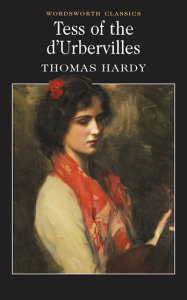
BY MARIEJO PLAGANAS, GUEST WRITER
Set in the late 19th century of rural England, Thomas Hardy compiles a seven-part story based on Tess Durbeyfield, the young female protagonist of his novel, Tess of the d’Urberville. However, the novel is not a typical heroic or teen drama that many young readers today experience, but follows a tragedy set in the Victorian era, encumbering societal facets of dominating double standards, male dominance, and stifling adversities.
After embarking on a journey originally in attempt to financially support her parents and rural lifestyle in regaining the higher status once held before in her lineage, Tess finds herself inevitably in despair after learning and dealing with the repercussions from the true nature of the male supremacy: seduction and rape. While she suffers between the enigmas and antics from two antipodal lovers who have doomed her life inevitably, she attempts to regain herself through confinement in solitude before she returns to her true love, but when she does, she contradicts the typical, submissive female role which leads to her self-actualization, in which it is too late.
Upon reading the first couple chapter of Hardy’s prolific and descriptive vocabulary, I was immediately drawn in by the elaborate detail and depiction of Tess’ life, but also through the message the author sends. In Hardy’s feministic-modernist book, Tess experiences a never-ending, unsettling life of dissension after leaving her hometown due partly to her tainted purity and chasteness. What could have saved Tess in the first place, society does not give; society deprives Tess of what she needs the most: compassion and decisive human action, which could have resolved the end to this tragedy.
In this era, society dictates that women should portray a paragon of purity and chastity—that the image of a woman should not be tainted in any way regardless anyone’s fault. But helpless against this dogmatic society, Tess not only suffers from the repercussions because of the fatal consequences, but also because there is no one to ultimately relieve or save her. This image of a nonexistent hero and lack of a third-party intervention defines Tess as a truly tragic and feministic symbol of Hardy’s prolific work.
Although the novel may appear to be a prolix encyclopedia filled with sophisticated adjectives and lengthy syntax, do not be discouraged by the author’s true message: the ethics and the potential, vicarious actions of humanity! The journey of a single person could be saved through the actions of other people which, in return, could curb the tragic fortune of that single individual. Though the novel may, at first, elicit a distracting trance, once dug into the plot, this daring, yet classic novel will leave you reading and wanting to know more between Tess, society, and development from a vulnerable beautiful young lady to an independent and strong heroine due to her enduring fortitude.







